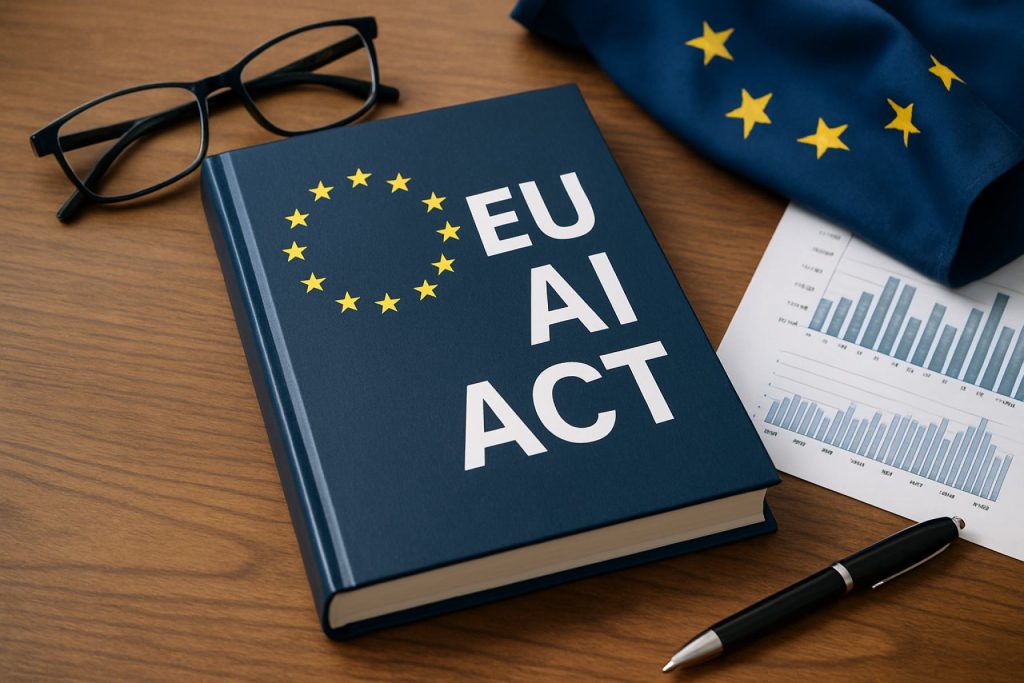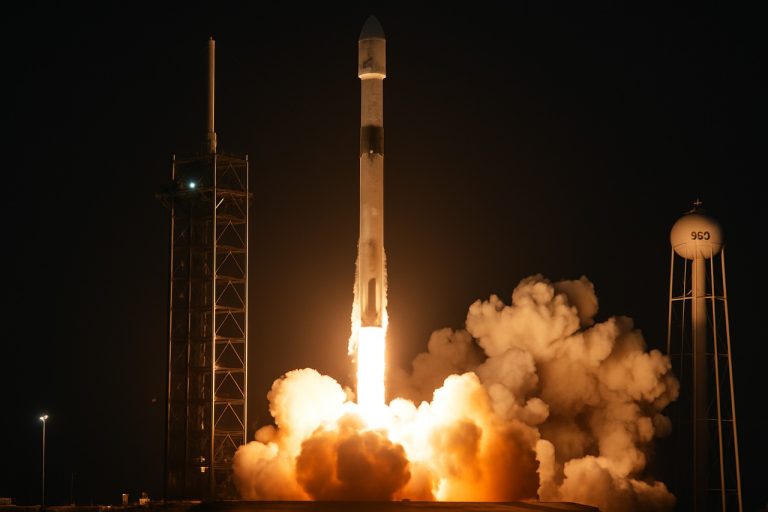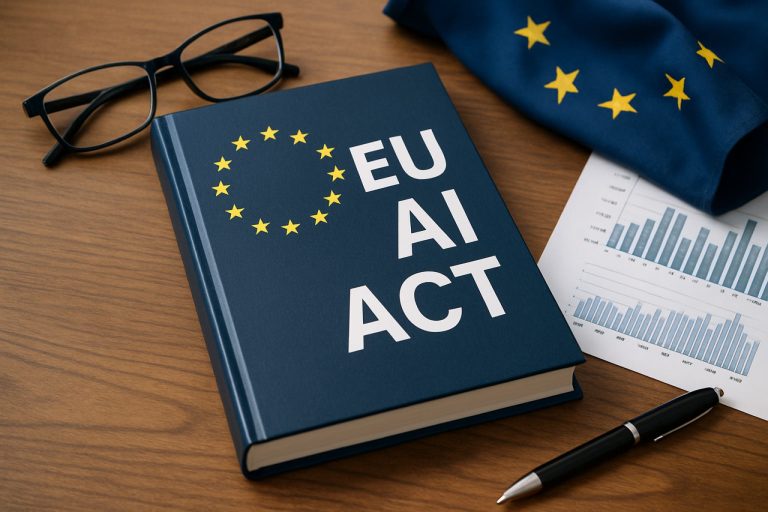
Unlocking the Impact of the EU AI Act: Essential Insights for Innovators and Leaders
- Market Overview: Understanding the EU AI Regulatory Landscape
- Technology Trends Shaping AI Compliance
- Competitive Landscape: Who’s Leading in AI Regulation Readiness
- Growth Forecasts: Anticipating Market Shifts Under the EU AI Act
- Regional Analysis: Navigating Compliance Across Europe
- Future Outlook: Preparing for the Next Wave of AI Regulation
- Challenges & Opportunities: Turning Compliance into Competitive Edge
- Sources & References
“The European Union’s Artificial Intelligence Act (EU AI Act) is the world’s first comprehensive framework regulating AI, aiming to ensure trustworthy AI that upholds safety, fundamental rights, and societal values digital-strategy.ec.europa.eu.” (source)
Market Overview: Understanding the EU AI Regulatory Landscape
The European Union’s Artificial Intelligence Act (EU AI Act) is set to become the world’s first comprehensive legal framework for artificial intelligence, with full implementation expected by 2025. This landmark regulation aims to ensure that AI systems used within the EU are safe, transparent, and respect fundamental rights, while fostering innovation and competitiveness across member states.
Key Provisions and Scope
- Risk-Based Approach: The Act classifies AI systems into four risk categories: unacceptable, high, limited, and minimal risk. Unacceptable risk systems (e.g., social scoring by governments) are banned, while high-risk systems (e.g., biometric identification, critical infrastructure) face strict requirements (European Commission).
- Obligations for Providers and Users: High-risk AI providers must implement robust risk management, data governance, transparency, and human oversight measures. Users of high-risk AI must monitor usage and report incidents.
- Transparency Requirements: AI systems interacting with humans, generating deepfakes, or using biometric categorization must clearly disclose their nature to users.
- Enforcement and Penalties: Non-compliance can result in fines of up to €35 million or 7% of global annual turnover, whichever is higher (Euractiv).
Timeline and Implementation
- The EU AI Act was formally approved by the European Parliament in March 2024 and is expected to enter into force in 2025, following a phased implementation period (European Parliament).
- High-risk system requirements will apply 24 months after entry into force, while bans on prohibited practices will take effect after 6 months.
Market Impact and Strategic Considerations
- Companies developing or deploying AI in the EU must conduct risk assessments, update compliance processes, and ensure transparency in AI operations.
- The Act is expected to set a global benchmark, influencing AI regulation in other jurisdictions (Reuters).
- Early compliance will be a competitive advantage, as organizations that adapt quickly can avoid penalties and build trust with EU consumers and partners.
Staying ahead of the EU AI Act means understanding its requirements, investing in compliance, and monitoring regulatory updates as the 2025 implementation approaches.
Technology Trends Shaping AI Compliance
The EU AI Act, set to take effect in 2025, is the world’s first comprehensive regulatory framework for artificial intelligence. Its primary goal is to ensure AI systems used within the European Union are safe, transparent, and respect fundamental rights. As organizations worldwide prepare for compliance, several technology trends are emerging to help businesses stay ahead of the curve.
- Risk-Based Classification and Governance: The Act introduces a risk-based approach, categorizing AI systems as unacceptable, high, limited, or minimal risk. High-risk systems—such as those used in critical infrastructure, education, or law enforcement—face stringent requirements. Companies are investing in AI governance platforms that automate risk assessment, documentation, and compliance reporting (Gartner).
- Explainable and Transparent AI: The Act mandates transparency for high-risk AI, including clear documentation and the ability to explain decisions. This is driving adoption of explainable AI (XAI) tools, which help organizations interpret model outputs and provide audit trails. According to Forrester, 62% of European enterprises are prioritizing XAI solutions in 2024.
- Data Quality and Bias Mitigation: To comply with the Act’s requirements on data governance, organizations are leveraging advanced data management platforms to ensure high-quality, representative datasets. AI bias detection and mitigation tools are becoming standard, with vendors like IBM and Microsoft integrating these features into their AI development suites (IBM).
- Continuous Monitoring and Auditing: The Act requires ongoing monitoring of AI systems post-deployment. This is accelerating the adoption of AI observability platforms that track model performance, detect drift, and flag compliance issues in real time (VentureBeat).
- Third-Party Compliance Solutions: As compliance complexity grows, demand for third-party compliance-as-a-service providers is rising. These vendors offer pre-built compliance modules, automated documentation, and regulatory updates, helping organizations reduce the burden of in-house compliance management (PwC).
With the EU AI Act’s enforcement on the horizon, organizations must invest in these technology trends to ensure compliance, minimize risk, and maintain a competitive edge in the evolving AI landscape.
Competitive Landscape: Who’s Leading in AI Regulation Readiness
The EU AI Act, set to take effect in 2025, is the world’s first comprehensive legal framework for artificial intelligence. Its goal is to ensure AI systems used in the EU are safe, transparent, and respect fundamental rights. As global businesses prepare for compliance, understanding the competitive landscape is crucial for staying ahead.
- Scope and Requirements: The Act classifies AI systems by risk—unacceptable, high, limited, and minimal. High-risk systems (e.g., biometric identification, critical infrastructure) face strict obligations, including risk assessments, data governance, human oversight, and transparency. Non-compliance can result in fines up to €35 million or 7% of global turnover (Euractiv).
- Who’s Leading: European tech giants and multinationals with significant EU operations—such as SAP, Siemens, and Ericsson—are investing heavily in compliance infrastructure. These companies are establishing dedicated AI governance teams, updating data management protocols, and engaging with regulators to shape implementation guidelines.
- Global Impact: The Act’s extraterritorial reach means non-EU companies offering AI products or services in the EU must comply. US tech leaders like Microsoft and Google are proactively aligning their AI development processes with EU standards, often using the Act as a blueprint for global AI governance (Reuters).
- SMEs and Startups: While large firms lead in readiness, small and medium-sized enterprises face resource constraints. The EU has pledged support through regulatory sandboxes and guidance to help SMEs adapt without stifling innovation (European Commission).
- Key Steps to Stay Ahead: Companies should conduct AI system inventories, assess risk levels, implement robust data governance, and establish clear accountability structures. Early engagement with legal and technical experts is essential for timely compliance.
With enforcement approaching, organizations that prioritize readiness now will gain a competitive edge, avoid costly penalties, and build trust with EU consumers and regulators.
Growth Forecasts: Anticipating Market Shifts Under the EU AI Act
The EU AI Act, set to come into force in 2025, is poised to reshape the artificial intelligence landscape across Europe and beyond. As the world’s first comprehensive AI regulation, its impact will reverberate through technology development, investment strategies, and compliance frameworks. Understanding the growth forecasts and anticipating market shifts under this new regulatory regime is essential for businesses aiming to stay ahead.
- Market Expansion and Compliance Costs: The European AI market is projected to grow from $7.7 billion in 2023 to $21.0 billion by 2028, at a CAGR of 22.9% (MarketsandMarkets). However, the EU AI Act introduces new compliance requirements, particularly for high-risk AI systems, which could increase operational costs by 8-15% for affected companies (McKinsey).
- Investment and Innovation Dynamics: While some analysts predict a short-term slowdown in AI deployment as organizations adapt, the Act is expected to foster long-term trust and investment in AI. By 2026, over 60% of European enterprises are expected to prioritize AI solutions that are “EU AI Act ready,” driving demand for compliant products and services (IDC).
- Sectoral Shifts: Sectors such as healthcare, finance, and automotive—where high-risk AI applications are prevalent—will see the most significant regulatory impact. Companies in these industries are already ramping up investments in compliance, explainability, and risk management tools (Deloitte).
- Global Ripple Effects: The EU AI Act is expected to set a de facto global standard, influencing regulatory approaches in the US, UK, and Asia. Multinational companies are increasingly aligning their AI governance frameworks with EU requirements to ensure market access and future-proof their operations (Brookings).
In summary, the EU AI Act will drive both challenges and opportunities. Early adaptation, investment in compliance, and a proactive approach to risk management will be key for organizations seeking to capitalize on the evolving European AI market in 2025 and beyond.
Regional Analysis: Navigating Compliance Across Europe
The EU AI Act, set to take effect in 2025, marks a transformative step in regulating artificial intelligence across Europe. As the world’s first comprehensive AI law, it establishes a harmonized legal framework designed to ensure AI systems are safe, transparent, and respect fundamental rights. For businesses and organizations operating in or with the EU, understanding the Act’s requirements is crucial to maintaining compliance and competitive advantage.
- Risk-Based Approach: The Act classifies AI systems into four risk categories: unacceptable, high, limited, and minimal. Unacceptable-risk AI (e.g., social scoring by governments) is banned. High-risk AI (such as biometric identification, critical infrastructure, and recruitment tools) faces strict obligations, including risk assessments, data governance, and human oversight (European Parliament).
- Transparency and Accountability: Providers of high-risk AI must register their systems in an EU database and provide clear information to users. Generative AI models, like ChatGPT, must disclose AI-generated content and publish summaries of training data used (Reuters).
- Geographical Scope: The Act applies to all providers and users of AI systems in the EU, as well as those outside the EU if their AI systems affect people within the EU. This extraterritorial reach means global companies must adapt their AI practices to comply with EU standards.
- Enforcement and Penalties: Non-compliance can result in fines of up to €35 million or 7% of global annual turnover, whichever is higher. National supervisory authorities will oversee enforcement, with the European AI Office coordinating at the EU level (EY).
- Implementation Timeline: The Act will be phased in, with bans on prohibited AI systems taking effect six months after entry into force, high-risk obligations in 24 months, and general provisions in 12 months.
To stay ahead, organizations should conduct AI inventories, assess risk levels, and update compliance programs. Early adaptation will not only mitigate regulatory risks but also position businesses as trustworthy AI leaders in the European market.
Future Outlook: Preparing for the Next Wave of AI Regulation
The EU AI Act, set to take effect in 2025, represents the world’s first comprehensive legal framework for artificial intelligence. Its primary goal is to ensure AI systems used in the European Union are safe, transparent, and respect fundamental rights. As organizations prepare for this regulatory shift, understanding the Act’s scope, requirements, and potential impact is crucial for staying ahead of compliance and innovation curves.
- Risk-Based Approach: The Act classifies AI systems into four risk categories: unacceptable, high, limited, and minimal. Unacceptable-risk AI (e.g., social scoring by governments) will be banned. High-risk AI—such as those used in critical infrastructure, education, employment, and law enforcement—will face strict obligations, including risk assessments, data governance, and human oversight (European Parliament).
- Transparency and Accountability: Providers of AI systems must ensure transparency, including clear labeling of AI-generated content and documentation of system capabilities and limitations. The Act also mandates post-market monitoring and incident reporting, increasing accountability throughout the AI lifecycle.
- Impact on Businesses: Companies deploying AI in the EU will need to adapt their development and deployment processes. According to McKinsey, organizations should start by mapping their AI use cases, assessing risk levels, and establishing compliance teams. Early preparation can mitigate costly disruptions and reputational risks.
- Global Implications: The EU AI Act is expected to set a global benchmark, influencing AI regulation in other jurisdictions. Multinational companies may need to harmonize their AI governance frameworks to meet both EU and non-EU requirements (Brookings).
With the Act’s phased implementation beginning in 2025, proactive organizations are already investing in compliance infrastructure, upskilling teams, and engaging with regulators. Staying informed and agile will be key to leveraging AI’s benefits while navigating the evolving regulatory landscape.
Challenges & Opportunities: Turning Compliance into Competitive Edge
The EU AI Act, set to take effect in 2025, represents the world’s first comprehensive regulatory framework for artificial intelligence. Its primary aim is to ensure AI systems used within the EU are safe, transparent, and respect fundamental rights. For businesses, this legislation introduces both significant challenges and unique opportunities to gain a competitive edge.
-
Key Compliance Challenges:
- Risk Classification: The Act categorizes AI systems into unacceptable, high, limited, and minimal risk. High-risk systems—such as those used in critical infrastructure, education, or employment—face stringent requirements, including mandatory risk assessments, data governance, and human oversight (European Parliament).
- Documentation & Transparency: Companies must maintain detailed technical documentation and provide clear information to users. This increases administrative overhead and demands robust internal processes.
- Third-Party Audits: High-risk AI systems require conformity assessments, often involving external auditors, which can be costly and time-consuming.
- Penalties: Non-compliance can result in fines of up to €35 million or 7% of global annual turnover, whichever is higher (Reuters).
-
Opportunities for Competitive Advantage:
- First-Mover Trust: Early compliance can position companies as trustworthy partners, especially in sensitive sectors like healthcare and finance.
- Market Access: Meeting EU standards opens doors to the world’s second-largest economy, while also setting a benchmark for global operations as other regions consider similar regulations (McKinsey).
- Innovation Incentives: The Act encourages the development of regulatory sandboxes, allowing companies to test AI solutions in a controlled environment, fostering innovation while ensuring compliance.
- Brand Differentiation: Demonstrating ethical AI practices can enhance brand reputation and attract customers, investors, and talent who prioritize responsible technology.
In summary, while the EU AI Act 2025 introduces complex compliance requirements, proactive adaptation can transform these obligations into strategic advantages, enabling organizations to lead in a rapidly evolving AI landscape.
Sources & References
- EU AI Act 2025: Everything You Need to Know to Stay Ahead
- European Commission
- Euractiv
- European Parliament
- EU AI Act
- Forrester
- IBM
- VentureBeat
- PwC
- Siemens
- Microsoft
- European Commission
- MarketsandMarkets
- McKinsey
- IDC
- Deloitte
- Brookings
- EY



